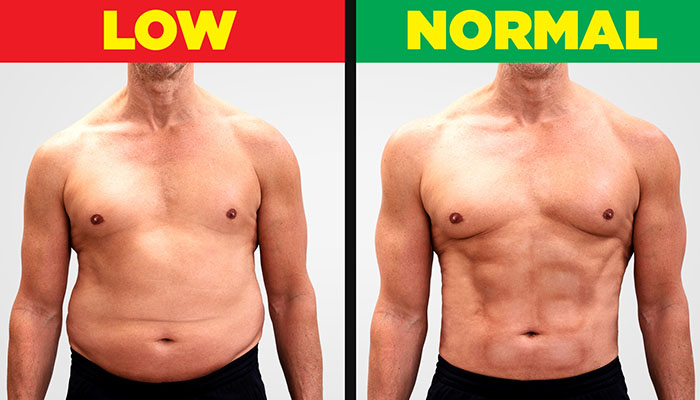
How Can I Treat Low Testosterone Levels?
The hormone responsible for male characteristics in men like deep voice, muscular build, and facial hair is called testosterone. Testosterone also helps with sexual urges, production of red blood cells, boosts mood, keeps bones strong and aids thinking ability. Lack of testosterone (sometimes called low T) can cause many unwanted symptoms.
Testosterone level peaks by early adulthood and drops as you age around 1% to 2% a year from the 40s onwards. As men reach their 50s and beyond this may lead to signs and symptoms such as impotence or changes in sexual desire, depression, anxiety, reduced muscle mass, less energy, weight gain, anemia, and hot flashes. While declining testosterone levels are a normal part of aging, certain conditions can hasten the decline. Low T risk factors include:
- Injury or infection, particularly if to the testicles
- Medications, especially hormones used to treat prostate cancer and corticosteroid drugs
- Chronic illness
- Stress
- Alcoholism
- Obesity
- Iron overload (haemochromatosis)
- Genetic disorders
Many men use testosterone replacement therapy to restore low levels to feel more alert, energetic, mentally sharp, and sexually functional. The general health of a male also affects testosterone levels. For example being overweight, having diabetes or thyroid problems and taking certain medications such as glucocorticoids and other steroids can affect levels. Therefore treating low-t levels doesn’t always involve taking extra testosterone.
Diagnosing low testosterone
Low testosterone levels are diagnosed by doctors based on a physical exam, review of symptoms and results of multiple blood tests since levels can fluctuate daily.
If your doctor diagnoses low testosterone other tests could also be considered before therapy. For example low-t can increase bone loss – bone density tests can be recommended to see whether you also need treatment for osteoporosis. This is common in men with very low testosterone and subsequent low oestrogen levels.
Prostate cancer is another reason for tests, as testosterone can fuel its growth. The Endocrine Society recommends against testosterone supplementation in certain situations like if you:
- Have prostate or breast cancer
- Have an elevated blood level of prostate-specific antigen
- Have a prostate nodule that can be felt during a rectal exam.
Other circumstances when testosterone supplementation is not recommended:
- A plan to become a father in the near-term
- An elevated red blood cell count
- Severe, untreated sleep apnea
- Severe lower urinary tract symptoms
- Poorly controlled heart failure
- Heart attack or stroke within the last 6 months
- A tendency to form blood clots (a condition called thrombophilia)
How to increase testosterone levels
Certain changes are needed in one’s lifestyle to help increase testosterone levels in men. For example adding resistance exercise and losing weight are two changes that can have an effect.
Research has shown that resistance exercise like lifting weights can be related to increases in testosterone levels. But those increases are typically much higher in younger men than older men and don’t appear to greatly increase the overall level of testosterone.
Most exercise, especially cardiovascular exercise, can contribute to the loss of excessive weight, which helps to increase testosterone level. This is particularly true for obese people.
Foods also play an important role in helping your body moderate your testosterone levels. Food rich in zinc and vitamin D may help to keep your testosterone at a normal level. Garlic has been credited for increased testosterone levels.
Low testosterone symptoms
Symptoms of abnormally low testosterone can be bothersome. These symptoms can highly impact on your quality of life. These symptoms can include:
- Decreased body hair
- Decreased muscle mass
- Low sex drive
- Erectile dysfunction
- Growth of breast tissue
Testosterone test
A testosterone test measures the amount of testosterone hormone in your blood. If your doctor wants to test the hormone levels in your blood they will specify a time of day for your test. Hormone levels are highest in the morning. So this test is often performed in the morning between 7:00 a.m. and 10:00 a.m. Your doctor may test your levels multiple times.
Certain drugs can affect your testosterone levels. So it’s important to tell your doctor about all medications you’re taking, including both over the counter and prescription drugs.
Testosterone therapy for low levels
In most cases men need to have both low levels of testosterone in their blood and a number of symptoms of low testosterone to go on therapy. You can read more about what blood tests are required for treatment here.
It is possible to have low levels of testosterone and not experience symptoms. But if you do not have any key symptoms, especially the most common ones: fatigue and sexual dysfunction, it is not recommended you go on the therapy as you will not notice any benefits.
Even if your levels are low and you have symptoms, low-t therapy isn’t always the primary course of action. If your doctor identifies the source for declining levels for instance, weight gain or a particular medication they may first address that problem.
If you and your doctor think testosterone replacement therapy is right for you to increase your hormone levels then there are a variety of delivery methods to think about-
- Skin patch- A patch is applied once every 24 hours, in the evening, and releases small amounts of the hormone into the skin.
- Gels- Topical gels are spread daily onto the skin over both upper arms, shoulders, or thighs.
- Pellets- These are implanted under the skin usually around the hips or buttocks to slowly release the testosterone. They are replaced every four – six months.
- Injections- Various formulations are injected from daily to 14 days. More frequent injections are recommended to prevent ‘peaks’ and ‘troughs’ in levels.
Most men show improvement in symptoms within four to six weeks of taking testosterone replacement therapy, although changes like increases in muscle mass or body fat reduction may take from three to six months.
If you are interested in TRT then make sure you look into reputable clinics that have renowned doctors in their field.


























